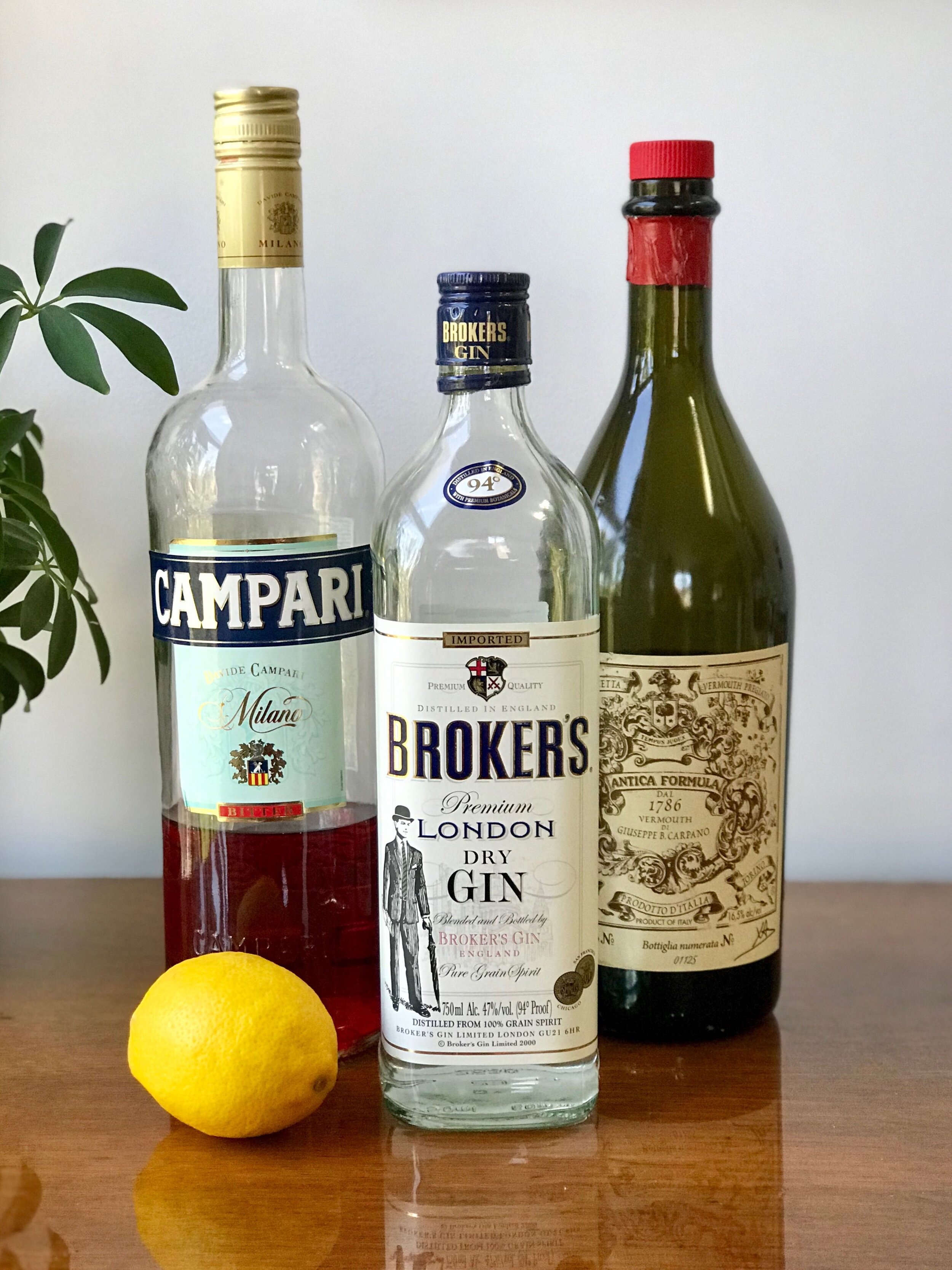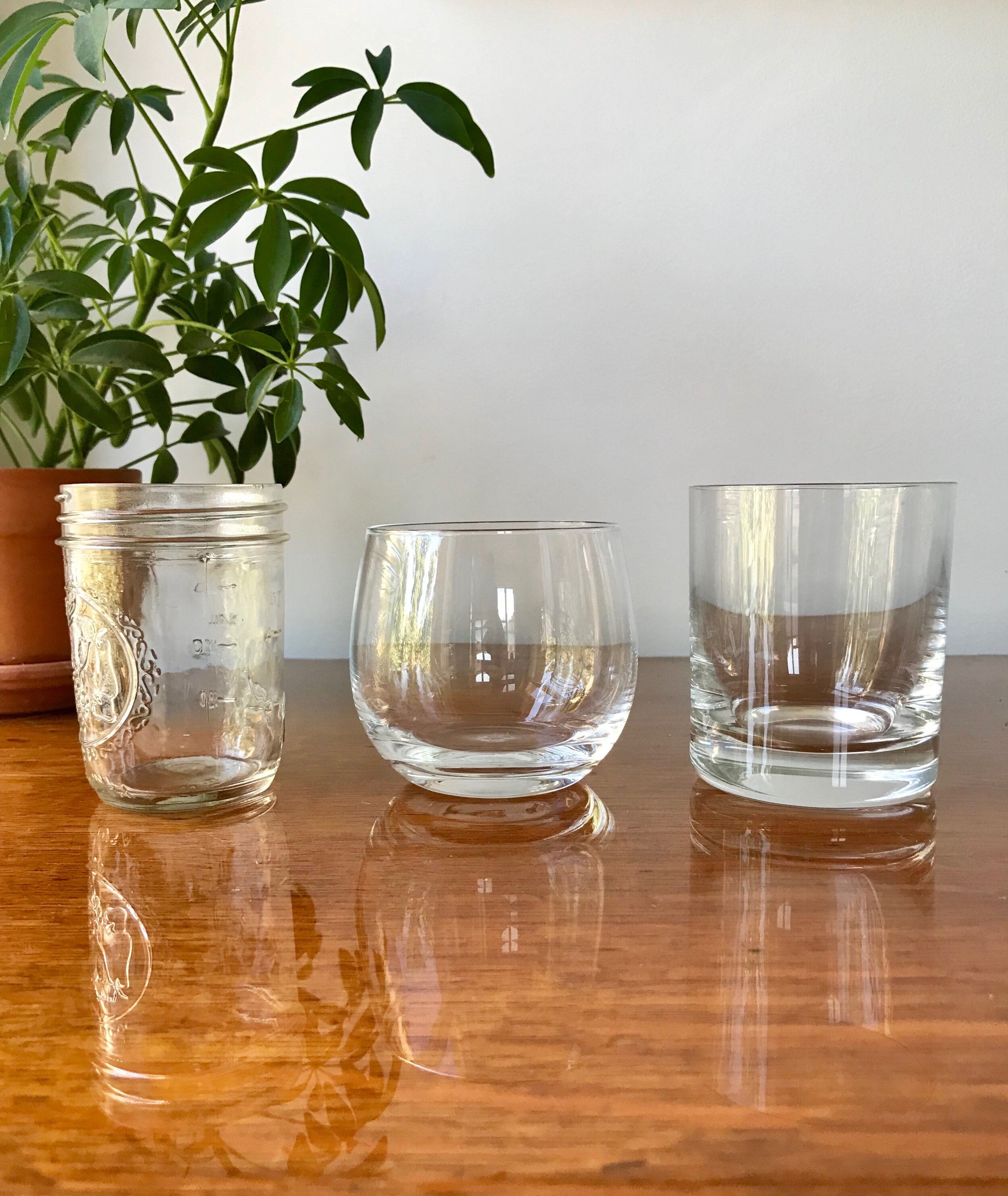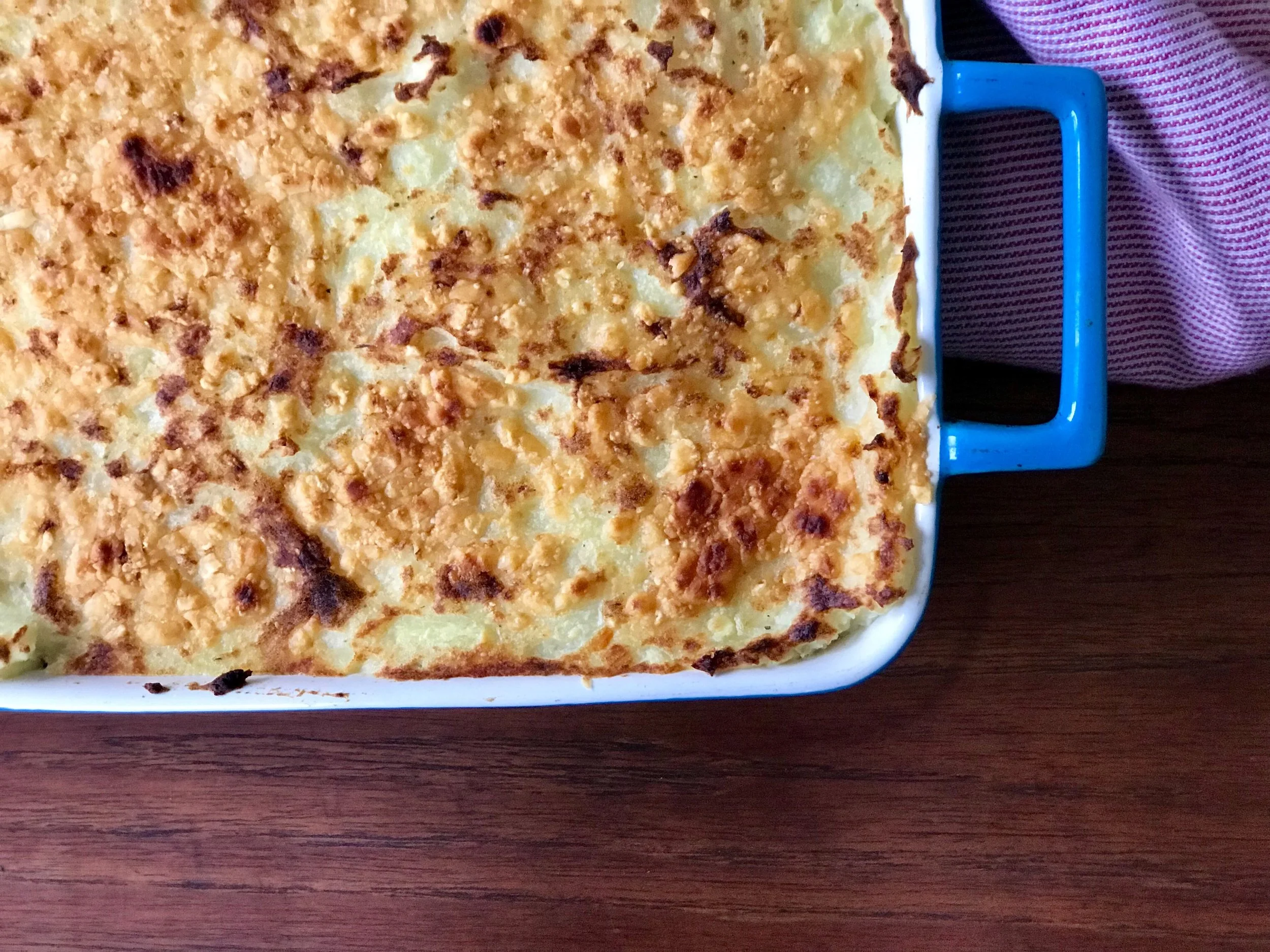The Bar Necessities
Starting a home bar is intimidating. Spirits are expensive—you don’t want to buy the wrong thing only to not use it, and you also don’t want to waste expensive alcohol on cocktail trials and failures. But it’s also really rewarding—spirits offer infinite opportunities to learn, experiment, obsess, and refine. And the better you are at making cocktails at home, the better you’ll be at ordering them when you’re out. That’s why we made this foolproof three-step guide to get you started. Once you’re up and running, you’ll find it’s a whole lot easier to go deeper and get creative.
Step 1: Build your foundation.
Here’s what you need to get going.
1. One whiskey (~$30)
This can be Bourbon, rye, Scotch, Canadian whiskey, or Japanese whiskey—whatever you like best. (For the initiated, those are all whiskeys.) If you happen to really enjoy whiskey, you can have two whiskeys—one for sipping and one for mixing (examples below). But, and we can’t stress this enough, don’t use your nicest whiskey (or any super-nice spirit) to mix cocktails unless you’re very rich or love wasting your nicest whiskey.
Mixing whiskeys can range from $15 to $45. On the cheaper end, try Jim Beam, Evan Wiliams, Old Overholt, or Trader Joe’s label whiskeys; in the mid-range, try Buffalo Trace, Rittenhouse, or Maker’s Mark; or go for something local and small-batch, like Standard Wormwood (from Brooklyn, pictured above), or 2Bar (from Seattle). Avoid anything in a plastic bottle. And yes, avoid Fireball, you monster.
2. One gin (~$30)
More and more boutique distilleries are making small-batch gins, and while we fully support that, beginner barmen and women just need one solid, brand-name gin to get started. Tanqueray, Hendricks, Beefeater, and Brokers (pictured above) all work well. If you want to be a hipster about it, find something local that’s not too expensive—$30 or $40 max. (In Seattle, we like Oola.)
3. One interesting, but not expensive, tequila (~$30)
A cheap, generic tequila will ruin a cocktail real quick, but some of the higher-end ones are either meant for sipping or overpriced for what you get (Patron). So for tequila, shoot right down the middle—something interesting, but not over $50. You can go with blanco, joven, or reposado, which will give you a range from clear to lightly colored. You don’t want anything añejo (old) or extra añejo (extra old), as those are meant for sipping. (I personally like blanco best for cocktails because it doesn’t add any color.) Try Espolòn (pictured above), Milagro, or Fortaleza, or literally just go to a decent liquor store and look for a cool bottle that you’ve never seen before that’s under $50 but over $25. Don’t use Jose Cuervo (still gives me the chills) or anything else that includes caramel coloring.
4. Angustora bitters (~$15)
When you’re just getting started, these are the only bitters you need. Angostura is a classic brand that’s well-loved by bartenders and works in a very wide variety of cocktails. Don’t fall into the Cool Bitters trap unless you know what you’re doing—that $20 bottle of lavender bitters only works in one cocktail and will sit on your bartop gathering dust.
5. One sweet vermouth and one dry vermouth ($~30 for both)
You’ll need these backbone ingredients to round out your cocktails. It’s hard to go wrong: Dolin is straightforward and works well, or, if you want to step it up a notch, try Carpano. It can be a little tricky to tell the sweet from the dry by the bottle—just ask the guy or gal at the liquor store. Always store your vermouth in the fridge.
6. Lemons ($5)
You should always have them. The juice and the peel work well in lots of cocktails; you can also use a wedge or a wheel for garnish.
Overall cost: $140
Step 2: Pick a house cocktail.
All the ingredients for my house cocktail: the Negroni.
When your friends come over for dinner or drinks, they’re not expecting you to make sixteen different cocktails. They know this is not a full-service bar. So stop (or never start) asking the open-ended question, “Would you like something to drink?” Instead, give them a very brief menu: “Would you like a Dark ‘n’ Stormy or a glass of wine?” Or, “I have negronis and Champagne.” Period, the end. Later you can roll out your incredible wine selections for the evening, but during cocktail hour, keep it simple.
Thus, step two: pick your house cocktail, stock up on the ingredients for it, and practice, practice, practice.
To me, this is the most important step of building a home bar. Picking one recipe that you really like and doing it over and over allows you to master a few techniques and ingredients. From there, it’s easier to branch out—maybe you can try a different cocktail with the same base spirit, or add a personal flair to a classic cocktail you know really well. The possibilities, as they say, are endless.
Here are some options to choose from. One thing to keep in mind: If you can, pick something that expands your foundation (above). If you like rum, maybe your house cocktail should be rum-based. If you’re interested in learning about Amaros, something with Amaro. Etc.
Wicked easy
Dark ‘n’ Stormy A New England classic that’s always in season. Equal parts dark rum (try Gosling’s) and ginger beer (try something funky and local, like Rachel’s, from Seattle, or go classic New England with Barritts). Served over ice in a rocks glass or a jar with a squeeze of lime.
My Girlfriend in Tacoma An easy-peasy summer cocktail that’s interesting and modern. Equal parts Amaro and rosé, served over ice with a grapefruit twist.
Regular easy
Negroni A restaurant-industry staple. One part gin, one part Campari, one part sweet vermouth (try Dolin or Carpano Antica). Served up (stirred with ice and then poured into a martini glass), or on the rocks, with a twist (a peel) of lemon.
Classic daiquiri Gives your dinner parties that Key West vibe. Two parts white rum, one part fresh lime juice, 1/2 part simple syrup (instructions below). Shaken and served up in a martini glass with a twist or a wheel of lime.
A real good margarita Never out of style. The classic recipe is two parts tequila blanco, one part Cointreau, one part fresh lime juice. Dylan likes to sub simple syrup for Cointreau, which means one less thing to purchase. Either way, serve shaken on the rocks with a salty rim.
Step 3: Gather your tools.
Here’s what you need.
1. Juicer
Just one of those hand-cranking citrus squeezers will do—nothing fancy.
2. Jigger
This will help you approximate amounts when you’re making a cocktail. Learn to be fast and loose with your jigger—most basic cocktails don’t require much precision.
Tools and ingredients for a rum Old Fashioned, Jarrett’s signature drink.
3. Peeler
You’ll need a simple vegetable peeler—again, nothing fancy—to make citrus twists.
4. Strainer
To pour your cocktails after shaking or stirring.
5. Stirrer
This can absolutely be a big ’ole spoon from your kitchen, but a long, skinny bar stirrer is easier to use and pretty cheap.
6. Shaker (optional)
Though the shaker seems like the most iconic bar tool, it’s actually the one you’ll need the least when you’re just getting started. There’s a golden rule with cocktails: If it contains fruit juice, you should shake it. If it does not contain fruit juice, you should stir it. The only exception to this rule is the martini, and that’s by personal preference (i.e. Bond’s “shaken, not stirred”).
What kind of shaker? I prefer a Boston shaker, which is the one that’s metal on the bottom, with what looks like a pint glass (but is actually a bit larger than a pint glass) on the top. Can you use the other kind of shaker? Yep. But if you’re buying one anyway, a Boston shaker is Cooler.
6. Glassware
You need two kinds of glasses, that’s it:
“Martini” or “up” cocktail glasses with stems: It’s nice to mix and match the vintagey ones, and we also like these ones from IKEA. Avoid dated (/tacky) martini glasses like this.
Rocks glasses: For cocktails with ice. Any style works—at my house, we often use plain old jars.
You do not need collins glasses or snifters or tiki mugs or Moscow mule mugs, unless you want them for your house cocktail or they otherwise spark joy.
Stem cocktail glasses. These all hold the same amount of liquid—about three ounces.
Rocks glasses.
That’s it, that’s all, folks. Get your foundation, your house cocktail, and your tools in order, and you’re ready to go. Answers to all your favorite questions below.
Um, excuse me?
What about vodka? Good question! You really do not need vodka unless you’re very into vodka (?) or it’s in your house cocktail. If you do want vodka, don’t overdo it—as long as it’s not in a plastic bottle it’s fine.
What about rum? Another good question! We love rum and we believe it is a great addition to your bar. Try picking a rum-based house cocktail to start and add some nice sipping rums to supplement. Rum is a whole rabbit hole that’s well worth your time.
Don’t I need simple syrup? Simple syrup is a good step up from the basics and can be used to round out a wide variety of cocktails. To make it, dissolve sugar (or honey!) in water on medium heat, at a roughly 2:1 ratio of water to sugar. Make a big batch and keep it in a sealed jar at room temp.
But shouldn’t I get those ice trays that make BIG ice cubes? Y’know what, yeah. They’re inexpensive, and it’s an easy way to make your cocktails look sleek and modern. At my house we call this “boss ice.”
What about crushed ice? Unless you’re going down the tiki route for your house cocktail (which, fuck yeah), you will never need crushed ice.
I already have all these things—what should I do next? You could consider purchasing more mixers, such as Amaro, Grand Marnier, Pernot, Allspice Dram, and/or some cool brandies. You could also vary your vermouths with a basic one and a nicer one. You can also pick your favorite spirit (whiskey, rum, gin, or vodka(?)) and start adding more variation in style, quality, region, etc. Last but not least, you can add a second or a third house cocktail to keep learning.
Cheers, gov’nah!
When you’re ready, kick it up a notch with some more interesting mixers.
A gorgeous, beautiful rum Old Fashioned. Coming soon to I’d Rather Be Meryl!











